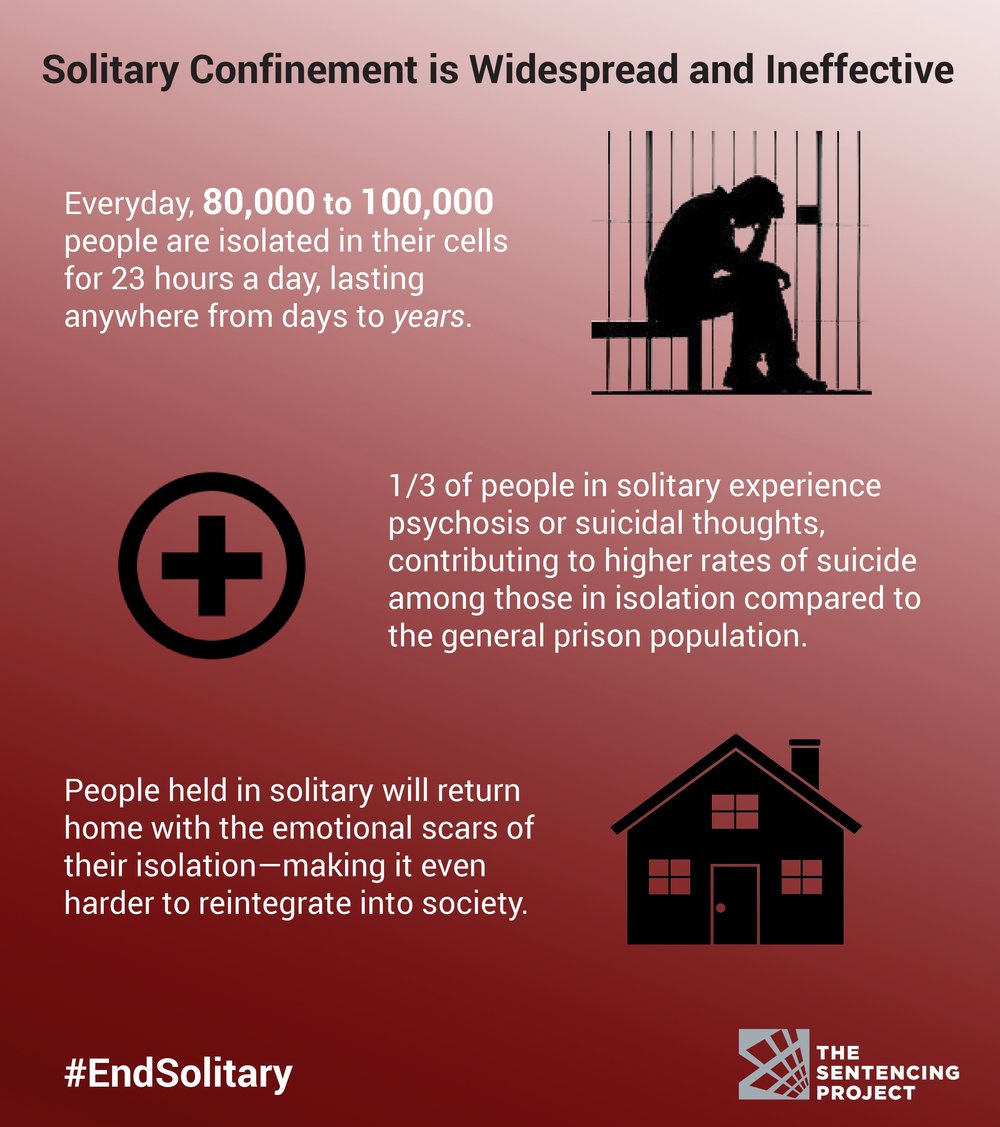Solitary confinement is widespread and [in]effective tool of white supremacy

From [HERE] When Kalief Browder, age 16, was accused of stealing a backpack, New York City sent him to the Rikers Island jail to await trial. While there, he sparred with the other teenagers, the guards fought with him, and — like more than one in four adolescent boys at Rikers — Kalief was placed in the Central Punitive Segregation Unit.
That was the facility’s euphemism for solitary confinement, a set of 400 boxes, each about 12 feet long and 7 feet wide equipped with a bed, a toilet and a sink. That’s a little bigger than two queen-size mattresses laid side by side.
Kalief spent most of his final 17 months of a three-year detention at Rikers, including 10 months consecutively, in the C.P.S.U. Finally outside the prison walls at age 20 and unable to forget his nightmarish incarceration, he took his own life. It was at least his fifth suicide attempt starting with his confinement. His mother had no doubts that “solitary confinement is what destroyed my son.”
The life and death of Kalief Browder received significant attention because he was young and he professed his innocence, but the horror of solitary confinement persists regardless of a person’s guilt or age. Kalief’s self-harm was not unique or unpredictable.
Dr. Stuart Grassian of Harvard University has found that roughly a third of people in solitary confinement are “actively psychotic and/or acutely suicidal.” People held in isolation are the most likely among all prisoners to attempt suicide. And since the vast majority of prisoners will return home, those held in solitary confinement will eventually place burdens on their families and communities as they attempt to adjust to life on the outside.
Solitary confinement is widespread, with an estimated 80,000 to 100,000 adults held in such conditions on a typical day. It is not unusual for individuals to be held in their cells for 23 hours a day for weeks, months or even years.
Among juveniles, 35 percent of those held in facilities report having spent time in isolation. For more than half of those juveniles held in solitary, the isolation lasted for longer than 24 hours.
The existence of transfer laws that send juveniles to adult facilities can result in their being the only youth in an institution; compliance with the federal Prison Rape Elimination Act, designed to protect young people from older ones, segregates these young prisoners.
If they are the only person under 18 at an adult facility (not an unlikely scenario), their separation equates to isolation. Ending the placement of youth in adult facilities would remove this possibility.
Solitary confinement’s widespread use belies its most common rationales: that prisoners are there for their own protection or that they are punished for violations of facility rules. But Kalief Browder, who scuffled with other young prisoners, suffered more at the hands of the guards, who the Department of Justice found repeatedly used excessive force and violence against adolescent males during Kalief’s time at Rikers.
The vast number of prisoners of all ages sent to solitary confinement is an indictment of corrections professionals and administrators’ inability to manage the population safely. Isolating people other than for short-term reasons of public safety is not an effective strategy to manage institutions. Solitary confinement is especially problematic for those with severe mental illness.
The unrest that plagues America’s prisons can also be blamed on inadequate staffing and limited programming for those incarcerated. Some corrections leaders are now limiting the amount of time spent in isolation and reconsidering the criteria for placement.
Nonprofit initiatives are providing technical assistance to localities that seek to limit the use of solitary confinement for both adult and youth populations.
There are other reasons to believe that the practice of solitary will be decreased. Former President Obama banned solitary confinement for the small number of juveniles in the federal prison system, and his Office of Juvenile Justice and Delinquency Prevention sought to help states eliminate its use as well.
The federal Bureau of Prisons, following a review directed by then-Attorney General Loretta Lynch, has reduced its use of restrictive housing, BOP’s term for solitary confinement.
The new administration has been silent thus far on such reforms. California eliminated most rationales for long-term solitary confinement for juveniles under a 2016 law, and administrators at Rikers Island have committed to eliminate solitary confinement for anyone under 22.
Kalief Browder’s experience is a reminder of the harm caused by solitary confinement; his death should mark a crossroads toward change.